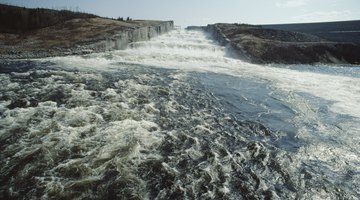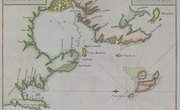The James Bay hydroelectric project, also known as La Grande Complex, originated in 1970. Work actually got underway in 1972 on a large tract of land in northwestern Quebec. Utilizing the hydraulic power of several rivers, work began on four powerhouses and over 200 dams and dikes. Transmission lines, totaling 3,000 miles in length, eventually carried electrical power to southern Quebec and Montreal.
Territorial Rights
In 1973, the Cree Indians, through an injunction, succeeded in stopping the James Bay project. Objections centered on the fact that native peoples had not been included in discussions pertaining to the project. Although the court lifted the injunction a week later, negotiations were started that resulted in benefits to the Native American populations of Quebec. The James Bay and Northern Quebec Agreement, a product of these negotiations, allocated absolute rights to nearly all of the land to the Crees and Inuits.
Airline
During the negotiations leading up to the James Bay and Northern Quebec Agreement, the Northern Quebec Inuit Association came into being. To maintain communication with Inuit communities in the region, the Association purchased an aircraft. Workers and negotiators traveled to those communities to keep residents posted on the progress of negotiations. Eventually, an airline was founded from what began as a one-plane operation, and Air Inuit grew to employ over 500 people. (Reference 4)
Hydroelectric Power
According to the International Green Energy Council, “Hydro power is currently the world's largest renewable source of electricity, accounting for 6% of worldwide energy supply or about 15% of the world's electricity.” In Canada, its use is much greater, as it supplies over half of the country's electrical power. Kinetic energy, the type of energy derived from movement, converts falling water into electrical energy. The energy from the water comes from the sun and is thus renewable.
Employment
A project the size of James Bay required workers for its construction. The project required architects, engineers, planners, electrical contractors, laborers and many other types of skilled workers. The workers came from the surrounding communities.
Related Articles
References
Writer Bio
Clare Inza Tyler started writing professionally for various websites in 2010, specializing in health, science, education and law. Tyler spent two years at Silvermine College of Art in Connecticut, where she learned the art of creative writing.











